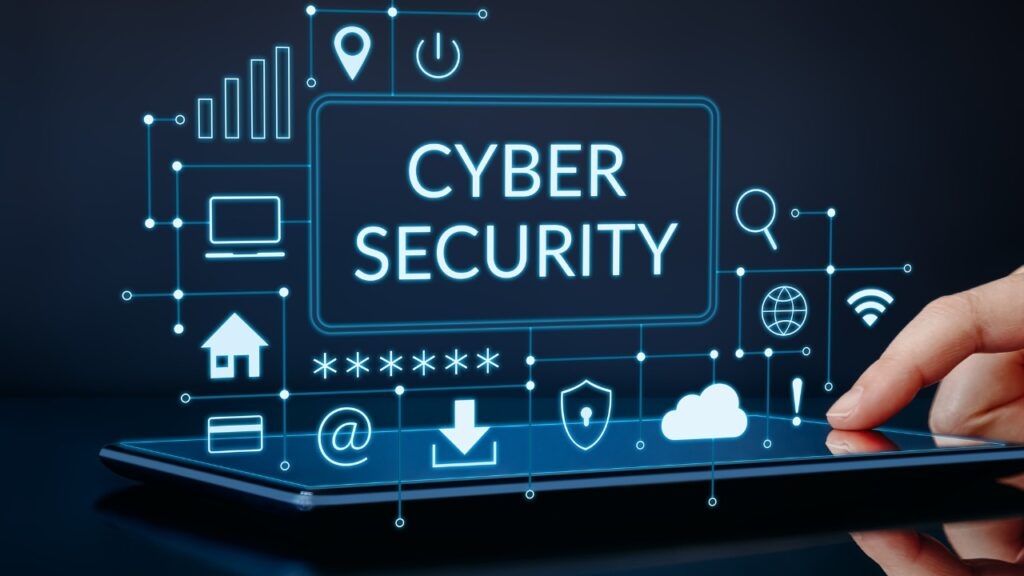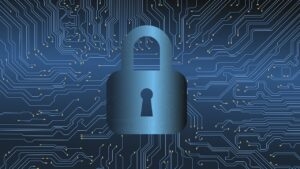Highlights
- Cybersecurity involves protecting computer systems, networks, and electronic devices from theft, damage, or unauthorized access.
- It is a critical component of modern business and government operations, with growing demand for skilled professionals in the field.
- Common cybersecurity threats include malware, phishing, and social engineering, and effective cybersecurity measures require a combination of technical and behavioral approaches.

Cybersecurity is becoming more and more crucial as technology permeates every aspect of our lives. Cybersecurity prevents unwanted access, theft, and damage to networks, electronic devices, and sensitive data.
Individuals, companies, and governments must act proactively to protect their digital assets as cyberattacks become more sophisticated and frequent.
A wide variety of precautions intended to defend against various dangers make up cyber security. Strong password implementation, sensitive data encryption, the use of firewalls and antivirus software, and routine software updates to fix known vulnerabilities are a few popular techniques.
Other strategies include keeping an eye on network traffic for indications of odd behavior, doing routine security audits, and instructing staff on how to spot dangers.
Despite all of the advantages of technology, the frequency of data breaches and cyberattacks has led to grave worries about privacy, security, and trust.
The possible effects of cyber assaults can range from financial fraud to identity theft and espionage, and they may be disastrous. As a result, cyber security has gained significant attention from corporations, people, and governments.
The foundations of cyber security, including the kinds of threats and vulnerabilities that exist, the most recent trends and best practices, and the significance of remaining educated about the most recent advancements, will be covered in this article.
Understanding the fundamentals of cyber security is crucial for safeguarding yourself and your digital assets, whether you are a business owner, a government official, or simply someone who wants to keep secure online.
All about Cyber Security
What is Cyber Security?

As I mentioned in this post, cybersecurity is preventing theft, damage, and unwanted access to computer systems, networks, and digital information.
Protecting computers, mobile devices, servers, and other electronic devices against cyber threats, including viruses, malware, spyware, phishing attacks, and hacking attempts, requires a variety of technologies, processes, and regulations.
Cyber assaults seriously threaten people, companies, and governments in the modern digital era because they are becoming more sophisticated and pervasive.
Since these attacks can lead to the loss of sensitive data, financial losses, or even the compromise of national security, cybersecurity measures are required to stop them.
A variety of tools, including firewalls, antivirus software, encryption, and two-factor authentication, may be used in cybersecurity tactics.
Additionally, cybersecurity experts are in charge of designing and putting security policies and procedures into practice, as well as monitoring and analyzing networks and systems for any possible risks.
Overall, cybersecurity is a crucial technique that aids in shielding people and businesses from the possible risks of the digital world, and it will continue to take on a greater significance over time.
How Important is Cyber Security?
In the modern world, cybersecurity is of the biggest significance. Cyber dangers have multiplied in number along with our growing reliance on technology and the internet.
Cybersecurity refers to the precautions to guard against unauthorized access, theft, damage, and other hostile assaults on computer systems and networks.
There are several ways to view cybersecurity’s significance. First, both people and companies may suffer financial losses as a result of cyber attacks.
Sensitive data, such as credit card numbers or login passwords, may be stolen in the event of a successful cyberattack and used for fraud or other nefarious purposes.
Cybersecurity solutions can aid in thwarting such assaults and shield people and organizations from monetary damages.
Second, cybersecurity is important because it helps safeguard sensitive data. Personal information like names, addresses, and social security numbers may fall under this category, as well as private company data like trade secrets and intellectual property.
Such information theft through cyberattacks can have major repercussions, including harm to one’s image and legal culpability. Such assaults may be avoided with the use of effective cybersecurity solutions, which can also safeguard critical data.
Thirdly, the protection of vital infrastructure is made possible through cybersecurity. Computer systems and networks are crucial to the operation of many important services, including healthcare, transportation, and energy.
These systems are vulnerable to cyberattacks, which might result in major repercussions, including service interruptions and even possible harm to people’s lives. Cybersecurity solutions can aid in thwarting these attempts and defending vital infrastructure.

Types of Cyber Attacks
Malicious efforts to use digital systems, networks, and devices for a variety of goals are known as cyber assaults. Cyber attackers may employ a variety of strategies and tactics to access sensitive data without authorization, stop services, or harm computer systems.
Some of the most typical forms of cyberattacks are listed below:
Malware: Malware is a category of software that aims to harm, interfere with, or provide unauthorized access to a computer system or network. Viruses, worms, Trojan horses, and ransomware are all examples of malware.
Phishing: Phishing is a social engineering assault in which victims are persuaded to divulge private data, including passwords, credit card numbers, or other details. Phishing assaults can take place via text messages, phone calls, or emails.
Denial of Service (DoS) and Distributed Denial of Service (DDoS) attacks: Attacks known as denial of service (DoS) and distributed denial of service (DDoS) are intended to overload a network or website with traffic and render it inaccessible to users. DoS attacks are initiated from a single device, whereas DDoS attacks flood the target with data from several devices.
Man-in-the-middle (MitM) attacks: Without either party’s knowledge, MitM attacks include intercepting and changing data sent between two parties. Attackers can use this method to steal confidential data or obtain unauthorized access to a system.
SQL Injection: Using SQL Injection, hackers may take advantage of database flaws in websites and other applications. Using this method, attackers can access confidential data without authorization or issue commands to the server.
Zero-Day Exploits: Zero-day exploits are software flaws that have not yet been patched and are unknown to the manufacturer. Attackers can use these vulnerabilities to get into computers, steal data, or distribute malware.
Advanced Persistent Threats (APTs) are sophisticated, persistent cyberattacks intended to steal confidential data or interfere with systems. Attackers can utilize a variety of strategies and tools to avoid detection while continuing to assault a target.

Types of CyberSecurity
Individuals and companies should consider various cyber security measures to protect their online activity.
Network Security: To prevent unwanted access, denial-of-service assaults, and other network-based attacks, network security entails safeguarding the organization’s network infrastructure, including firewalls, routers, and switches.
Application security: This branch of cybersecurity guards against flaws and attacks in software and applications, including online and mobile ones. It includes secure coding techniques, penetration tests, and vulnerability analyses.
Cloud security: Cloud security has emerged as a crucial element of cybersecurity as more businesses shift their data and apps to the cloud. This entails protecting the cloud infrastructure, data security, and legal compliance.
Endpoint security: It entails protecting devices that connect to the network of the company, such as laptops, desktop computers, and mobile phones. Firewalls, intrusion prevention systems, and antivirus software are examples of endpoint security solutions.
Data security: It prevents sensitive and private information from being stolen, accessed by unauthorized parties, and breached. Implementing encryption, access restrictions, and data backup and recovery are part of this.
Identity and access management (IAM): With this process of controlling user identities and their network-based access to resources. Access control, authentication, and authorization are all included.
Disaster recovery and business continuity: Cybersecurity incidents can disrupt daily operations, but planning for disaster recovery and business continuity can help firms swiftly recover and lessen the effects.
Evolution of the Cyber Security Threat Landscape
With new threats and attack vectors continually developing, the cyber security threat environment has changed substantially over time. Cyberattacks in the past were frequently conducted by lone people or small groups using relatively easy techniques like malware and phishing emails.
Today, nation-states, terrorist groups, and even well-funded and well-organized criminal enterprises frequently carry out cyber assaults.
The move from assaults targeted at stealing data to attacks targeted at damaging or destroying essential infrastructure has been one of the most important developments in the security environment. This involves assaults on water treatment facilities, electrical systems, and other crucial services.
Additionally, there has been an increase in assaults on Internet of Things (IoT) devices, which are frequently insecure and are simple targets for widespread attacks.
The evolution of attack methods is a significant development in the landscape of cyber security threats. Attacks are becoming more targeted and challenging to stop, thanks to attackers’ increased use of machine learning (ML) and artificial intelligence (AI).
They also employ cutting-edge strategies, including supply chain assaults targeting software suppliers and other third-party vendors and zero-day exploits targeting previously undiscovered software flaws.

GenV Attacks in Cyber Security
The term “Gen V” refers to the fifth generation of cyberattacks distinguished by their sophisticated and advanced capabilities.
These assaults are frequently carried out by well-resourced and organized cybercriminals or state-sponsored organizations and are generally designed to avoid detection by conventional security measures.
Typical Gen V assaults include:
Ransomware: It is a category of malware that encrypts a victim’s files and demands money in return for the key to unlock the encryption.
Advanced Persistent Threats (APTs): These are long-lasting, targeted attacks with the goal of avoiding detection and obtaining access to confidential data.
Zero-day attacks: These attacks make use of flaws in hardware or software that the vendor is unaware of or that have not yet been addressed.
Attacks without files are challenging to identify because they employ normal system tools to carry out malicious behavior.
Supply chain attacks: To enter a target organization’s network, these attacks target outside vendors or suppliers.
Organizations must have sophisticated security measures in place, such as threat intelligence, endpoint detection and response (EDR), network segmentation, and access restrictions, to fight against Gen V threats.
As they are frequently exploited as entry points for more sophisticated assaults, informing staff members of the dangers of phishing and other social engineering attacks is crucial.
Cyber Security Tips
Their data from online assaults. Here are some cybersecurity pointers:
Create strong, one-of-a-kind passwords: Since weak ones can be readily guessed by hackers, giving them easier access to your accounts. Avoid using the same password for many accounts and use lengthy, difficult passwords instead.
Enable two-factor authentication: Two-factor authentication increases the security of your accounts by requiring a second form of identification, such as a fingerprint scan or a code delivered to your phone.
Update your software: Software updates frequently come with security patches that address existing vulnerabilities; therefore, it’s critical to do so.
Use antivirus software: Malware may be found and removed from your computer or device with the use of antivirus software.
Be wary of phishing emails: Persuasive nature and the links and files they frequently contain that might harm your machine with malware. Be wary of emails from people you don’t know, and wait to click on links or download attachments until you are certain they are secure.
Use secure networks: Public Wi-Fi networks shouldn’t be used for private tasks like online banking or shopping as they are frequently unprotected and open to hacker intrusion.
Back up your Data: Make regular backups of your data to ensure that you can retrieve critical information in the case of a cyberattack.
Educate yourself and your staff: Because cybersecurity threats are ever-evolving, it’s critical to be informed on the most recent dangers and teach your staff the best practices for staying secure online.
Wrapping it All
In conclusion, because of our increasing reliance on technology, cyber security has taken on more significance in modern life.
People and companies must take proactive actions to protect their digital assets since cybercriminals are continually discovering new ways to access sensitive information without authorization.
Firewalls, encryption, multi-factor authentication, and security awareness training are just a few of the many techniques and tools that make up cyber security.
A mix of technological know-how, risk management, and continual awareness is needed for effective cyber security. It is a continuous process that needs ongoing monitoring and modification to respond to the shifting threat landscape rather than a one-time repair.
Furthermore, it’s critical to understand that everyone working for a business has a role to play in ensuring cyber security. This obligation extends beyond IT departments and security teams.
The value of cyber security will only increase as we transition to a more digital and connected society. We must keep up with current risks, be alert to them, and take preventative steps to safeguard our personal and professional data.
We can all contribute to creating a safe and secure digital environment for present and future generations by being educated, implementing best practices, and exercising caution.
Further Reading:
Directly in Your Inbox









